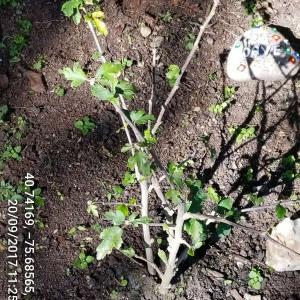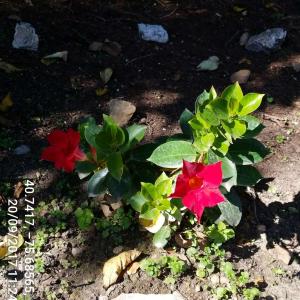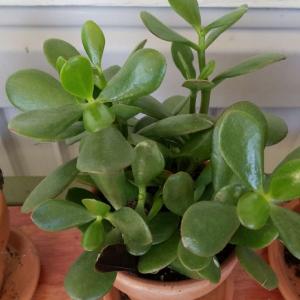文章
Dummer. ゛☀
2017年09月23日

Every swelling bud in the garden is like a little promise from your plants. When these buds collapse for no reason, it may bring a gardener to tears. It may feel like all the love and care you’ve given your plants and the time you waited to see them finally bloom was wasted. But fear not, fellow gardener; flower bud blast may be disappointing, but it’s rarely a serious condition.
What is Bud Blast?
Bud blast is a term used to describe flowers that have prematurely aborted before or soon after opening, such as with scape blasting in daylilies. Most often, flowers develop to a certain point and simply stop growing. Other bud blast symptoms may indicate the exact cause of flower bud blast. For example, flower buds that become paper-thin and dry may be suffering from botrytis blight, a common landscape fungus.
What Causes Bud Blast in Flowers?
More often than not, the cause of bud blast is a problem in the environment. This is good news, though, because treating bud blast only requires you to figure out what the problem is and fix it for good. To help with your bud blast care, the most common environmental problems are listed below, along with solutions for treating bud blast: Improper Watering – Improper watering causes a great deal of stress to many plants. Under watering may cause plants to redirect water from enlarging buds to food-producing areas in an act of self-preservation. Over watering often leads to root rot, or other fungal infections that may destroy developing flower buds. Water plants when the top two inches of the soil is dry, and add two to four inches of organic mulch to keep moisture levels more even.
Temperature Extremes – Extremes in temperature can influence developing buds, especially in indoor plants. When temperatures fluctuate madly, plants get stressed and may respond by dropping all excess baggage in an attempt to survive. Flowers are costly and are often the first thing to be jettisoned, especially when temperatures are more often very cold than very warm. Moving indoor plants may correct the problem, but not much can be done for outdoor plants, although covering them with cardboard boxes on very cold nights may help. Wrong Lighting – Light has a direct effect on how well the plant can produce food and survive. Often, buds fail when high light plants are in low light settings, if they are initiated at all. At the same time, plants accustomed to low light situations may overheat in direct sun, causing buds to fail. Move these plants to more appropriate lighting conditions or provide supplementary light indoors.
Too Little Humidity – Insufficient humidity can interfere with proper bud formation, especially in tender indoor plants like orchids. Too dry of conditions or humidity that fluctuates considerably will lead to buds that drop. If your indoor plants are experiencing this problem, you can place them on top of some rocks in the center of a pan filled with water to increase the humidity in their immediate area. Young Plants – Younger plants often lack the root structure to support blooms, though they may try to set them regardless, leading to aborted blossoms. If your plant has been recently transplanted or the one with problems is a perennial you divided in the last season, pick any blooms off to allow the root system to expand before permitting it to bloom.

What is Bud Blast?
Bud blast is a term used to describe flowers that have prematurely aborted before or soon after opening, such as with scape blasting in daylilies. Most often, flowers develop to a certain point and simply stop growing. Other bud blast symptoms may indicate the exact cause of flower bud blast. For example, flower buds that become paper-thin and dry may be suffering from botrytis blight, a common landscape fungus.

What Causes Bud Blast in Flowers?
More often than not, the cause of bud blast is a problem in the environment. This is good news, though, because treating bud blast only requires you to figure out what the problem is and fix it for good. To help with your bud blast care, the most common environmental problems are listed below, along with solutions for treating bud blast: Improper Watering – Improper watering causes a great deal of stress to many plants. Under watering may cause plants to redirect water from enlarging buds to food-producing areas in an act of self-preservation. Over watering often leads to root rot, or other fungal infections that may destroy developing flower buds. Water plants when the top two inches of the soil is dry, and add two to four inches of organic mulch to keep moisture levels more even.

Temperature Extremes – Extremes in temperature can influence developing buds, especially in indoor plants. When temperatures fluctuate madly, plants get stressed and may respond by dropping all excess baggage in an attempt to survive. Flowers are costly and are often the first thing to be jettisoned, especially when temperatures are more often very cold than very warm. Moving indoor plants may correct the problem, but not much can be done for outdoor plants, although covering them with cardboard boxes on very cold nights may help. Wrong Lighting – Light has a direct effect on how well the plant can produce food and survive. Often, buds fail when high light plants are in low light settings, if they are initiated at all. At the same time, plants accustomed to low light situations may overheat in direct sun, causing buds to fail. Move these plants to more appropriate lighting conditions or provide supplementary light indoors.

Too Little Humidity – Insufficient humidity can interfere with proper bud formation, especially in tender indoor plants like orchids. Too dry of conditions or humidity that fluctuates considerably will lead to buds that drop. If your indoor plants are experiencing this problem, you can place them on top of some rocks in the center of a pan filled with water to increase the humidity in their immediate area. Young Plants – Younger plants often lack the root structure to support blooms, though they may try to set them regardless, leading to aborted blossoms. If your plant has been recently transplanted or the one with problems is a perennial you divided in the last season, pick any blooms off to allow the root system to expand before permitting it to bloom.

0
0
文章
Dummer. ゛☀
2017年09月23日

Despite all your planning and care, nature and animals have a way of messing up the garden and landscape in ways that may seem needlessly cruel to the plants involved. Uprooted garden plants are a very common gardening problem, especially in areas prone to high winds. Trees, garden vegetables and perennials are frequent victims. Keep reading for information on what to do about plant roots coming out of ground.
Can Uprooted Plants be Saved?
Yes, sometimes uprooted plants can be saved. That’s the best answer you’ll get out of an experienced gardener because dealing with uprooted plants is a gamble at best. Uprooted plant damage ranges in severity from annoying and cosmetic to extremely damaging, especially when large portions of the root system are broken or left exposed to the air for extended periods.
Tree roots coming out of the ground are especially problematic, both because of the challenge of up-righting the tree and that of re-anchoring it. Small plants that have been uprooted for a very short time and not allowed to dry out are the easiest to save. These plants may have lost a few root hairs but aren’t going to experience anything more than minor transplant shock.
As plant size and exposure time increases, the outcome of your rescue operation is much less certain, but it’s always worth trying. If you just leave the plant uprooted, there’s zero chance it’ll survive, where even the most stressed uprooted plant might survive with enough care.
How to Replant an Uprooted Plant
When a plant has been uprooted, you must act quickly and decisively in order to save it. First, inspect the rootball carefully for breaks and damage. If the roots are white and relatively intact, your plant is healthy, so wet the rootball well and replant it where it belongs. Small plants dug by dogs or other wild animals can usually be convinced to remain stable simply by watering them well and leaving them alone. Bigger plants, however, will need more convincing. You’ll need to supply extra support for larger bushes and trees uprooted by wind or other accidents, since they’re often top heavy and won’t be able to compensate right away. Resist the urge to trim trees and bushes at this time – they’re going to need all the leaves they have to feed their new root growth.
Many gardeners tie them to posts or pins secured in the ground, with the tension pulling in the opposite direction of the tree’s new lean. Boards can also be wedged between the trunk and the ground at an angle to help hold the tree upright. Using both methods in combination may yield the best results. Wait to fertilize your plant with nitrogen until it starts to show signs of new growth, since it doesn’t need the added stress associated with putting out a lot of shoots while it’s trying to anchor itself to the ground.
Remove the supports several times a month to check the steadiness of your plant; reinstall them if the tree can be wiggled in its hole even a little bit. Remember to water your troubled plant well and often – it may be missing a significant portion of its roots and unable to bring enough water into its system to meet its needs.

Can Uprooted Plants be Saved?
Yes, sometimes uprooted plants can be saved. That’s the best answer you’ll get out of an experienced gardener because dealing with uprooted plants is a gamble at best. Uprooted plant damage ranges in severity from annoying and cosmetic to extremely damaging, especially when large portions of the root system are broken or left exposed to the air for extended periods.

Tree roots coming out of the ground are especially problematic, both because of the challenge of up-righting the tree and that of re-anchoring it. Small plants that have been uprooted for a very short time and not allowed to dry out are the easiest to save. These plants may have lost a few root hairs but aren’t going to experience anything more than minor transplant shock.
As plant size and exposure time increases, the outcome of your rescue operation is much less certain, but it’s always worth trying. If you just leave the plant uprooted, there’s zero chance it’ll survive, where even the most stressed uprooted plant might survive with enough care.

How to Replant an Uprooted Plant
When a plant has been uprooted, you must act quickly and decisively in order to save it. First, inspect the rootball carefully for breaks and damage. If the roots are white and relatively intact, your plant is healthy, so wet the rootball well and replant it where it belongs. Small plants dug by dogs or other wild animals can usually be convinced to remain stable simply by watering them well and leaving them alone. Bigger plants, however, will need more convincing. You’ll need to supply extra support for larger bushes and trees uprooted by wind or other accidents, since they’re often top heavy and won’t be able to compensate right away. Resist the urge to trim trees and bushes at this time – they’re going to need all the leaves they have to feed their new root growth.

Many gardeners tie them to posts or pins secured in the ground, with the tension pulling in the opposite direction of the tree’s new lean. Boards can also be wedged between the trunk and the ground at an angle to help hold the tree upright. Using both methods in combination may yield the best results. Wait to fertilize your plant with nitrogen until it starts to show signs of new growth, since it doesn’t need the added stress associated with putting out a lot of shoots while it’s trying to anchor itself to the ground.

Remove the supports several times a month to check the steadiness of your plant; reinstall them if the tree can be wiggled in its hole even a little bit. Remember to water your troubled plant well and often – it may be missing a significant portion of its roots and unable to bring enough water into its system to meet its needs.
0
0























